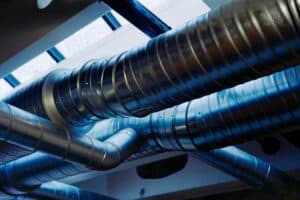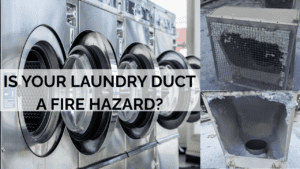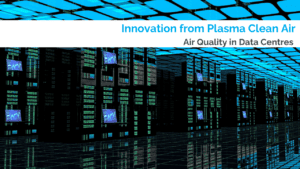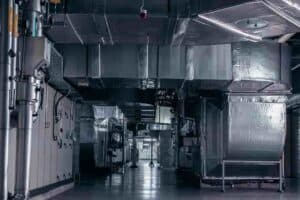As the global focus on sustainability intensifies, achieving net zero carbon emissions is no longer optional – it’s a critical goal for commercial kitchens across sectors such as hospitality, healthcare, and education. For Building Services Consultants, M&E contractors, Facility Managers, and Kitchen Operators, ensuring kitchen ventilation systems align with net zero ambitions is essential for reducing carbon footprints while maintaining efficiency and safety.
In this post, we’ll explore key solutions that enable commercial kitchens to achieve their sustainability goals without compromising performance or compliance.
1. Low Pressure Drop Filtration Equipment
The first step toward achieving net zero in commercial kitchens is implementing energy-efficient ventilation systems. Low pressure drop filtration systems, such as Grease Bloc Eco, Electrostatic Precipitators (ESPs) and Ultraviolet-C (UVC) technology, significantly reduce energy consumption by improving airflow efficiency.
Grease Bloc Eco is a low pressure drop, sustainably sourced grease filter which captures up to 98% of grease particles at the canopy. It stops grease at the canopy, dramatically reducing TR19 duct cleans and helps maintain fan efficiency. ESPs effectively capture grease, smoke, and fine particulate matter from kitchen exhausts, reducing the need for excessive ventilation rates. Meanwhile, UVC lamps help neutralize grease and reduce odour, minimizing the environmental impact of exhaust air. These technologies work together to create cleaner air, reduce energy costs, and extend the life of your kitchen extraction system.
2. Demand-Controlled Ventilation
Integrating demand-controlled ventilation (DCV) is another game-changing approach for commercial kitchens aiming to hit net zero. Traditional ventilation systems operate at full capacity, regardless of the kitchen’s activity levels. DCV systems, however, monitor real-time cooking conditions, automatically adjusting airflow rates based on kitchen activity.
By only running the ventilation system when needed, DCV reduces energy consumption by up to 50%, cutting both operational costs and carbon emissions. It also optimizes kitchen comfort by ensuring that air quality and temperature remain stable during peak and non-peak times.
3. Heat Recovery Systems
Recirculating filtration towers offer a highly effective way to recover waste heat from commercial kitchens. This recovered heat can be repurposed to preheat incoming air or provide space heating, further reducing energy usage. These systems also help lower overall HVAC loads, decreasing the strain on energy resources.
When paired with high-efficiency filtration systems like ESPs and UVC, HVAC-mounted heat recovery solutions can dramatically reduce the environmental impact of commercial kitchen operations while delivering tangible cost savings.
4. Effective Maintenance for Optimal Performance
To ensure your ventilation system operates at peak efficiency and continues contributing to your net zero goals, regular maintenance is crucial. Poorly maintained equipment not only consumes more energy but also poses safety risks. Routine cleaning of ESP plates, UVC lamps, and air filters is essential for maintaining optimal airflow and performance.
Preventative maintenance programs should be established to address potential issues before they escalate, ensuring that your system remains energy-efficient and compliant with local environmental regulations.
Conclusion
Achieving net zero in commercial kitchens requires advanced technology, smart design, and vigilant maintenance. By investing in low pressure drop filtration equipment, demand-controlled ventilation, and heat recovery systems, you can significantly reduce your kitchen’s carbon footprint while enhancing operational efficiency. Coupled with effective maintenance, these solutions will help ensure your kitchen meets the growing demand for sustainability, setting you on the path to a greener, more responsible future.
For more information on how to optimize your commercial kitchen ventilation system for sustainability, contact our expert team today.








